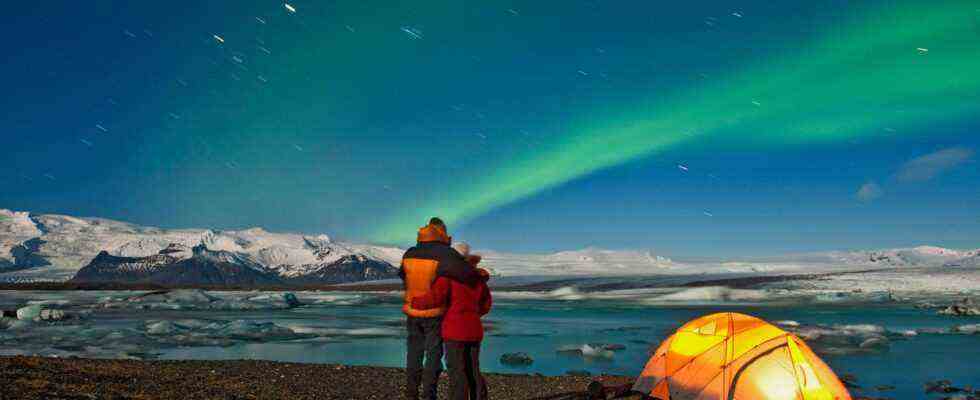The nocturnal phenomenon in the winter sky is completely silent: anyone who has ever been lucky enough to experience the Northern Lights somewhere in Scandinavia will be overwhelmed by this natural spectacle that comes out of nowhere and disappears again after a few moments.
Anyone who has seen it with their own eyes also knows about the cold feet that you get from the often endlessly long wait. In order to see the green-turquoise, blue or sometimes pink drifting veil of light, you need to have some luck on your side in addition to warm clothing.
On the island of Iceland, the conditions for the northern lights are particularly good in the winter season. Aurora Basecamp has even been around for a few years near Hafnarfjörður near the capital Reykjavik. Protected from the cold in geodesic glass domes, the nocturnal spectacle can be observed in the middle of the volcanic landscape.
Even in unfavorable weather conditions, such as overcast skies, the visit is worthwhile. Because the play of light is also imitated by six glass tubes installed inside the lounge: the constellation of gases and air pressure from the upper atmosphere is reproduced in the tubes and charged with electrical energy.
The polar or northern lights are also called “aurora borealis” in Latin. The phenomenon occurs in the polar regions when electrically charged particles from the solar wind hit the upper layers of the earth’s atmosphere. There they stimulate oxygen and nitrogen molecules in particular to glow.
Especially in late autumn and winter, but also into spring, the northern lights can be observed not only in Iceland, but also in the Scandinavian countries, in Siberia, Canada and Alaska.
Also read:
– From rustic to luxurious, these are Iceland’s most remote places to stay
– Aurora Basecamp on Iceland: Where the Northern Lights shine magically
– Ten years ago: When an Icelandic volcano paralyzed air traffic

